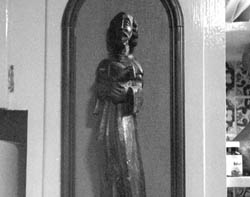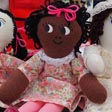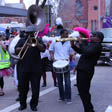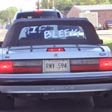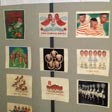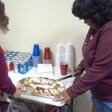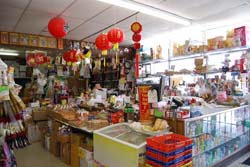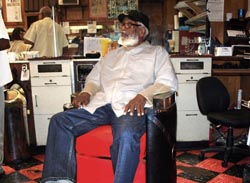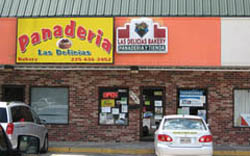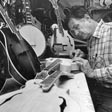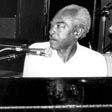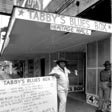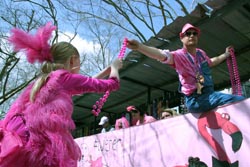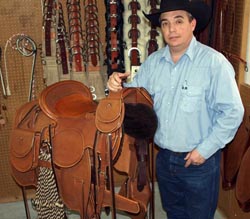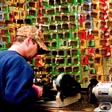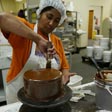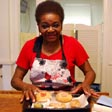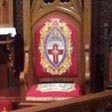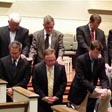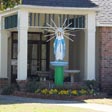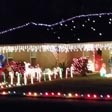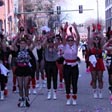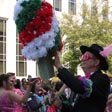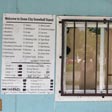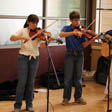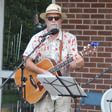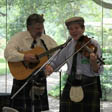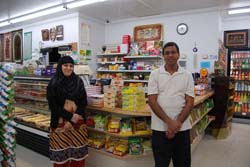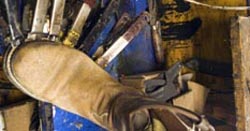Baton Rouge: A Cultural Microcosm of Louisiana
By Maida Owens
Introduction
Baton Rouge is my hometown: it's where I grew up, went to school, and have worked as a professional folklorist since the 1980s. Over the years, I have noted that all too many people like to criticize Louisiana's capital city. People love the state and its culture, but some make an exception about Baton Rouge. Many residents and especially non-residents think that it lacks any expressions of folk culture even though it is home to an array of individuals who maintain Louisiana's defining traditions.
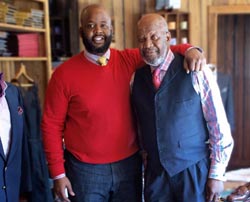
I started wondering why Baton Rouge, a mid-sized Southern city that has boomed since World War II, is perceived as having no folk culture. I knew that as the capital city, it is a cultural microcosm with people coming from across the state—as well as southern Mississippi—to work, especially since the economic boom of the 1970s. Others have moved here from throughout the United States for employment at the universities and in industry. I began to realize that Baton Rouge has an identity issue.
Others have documented the city's history1 but not its cultural traditions. An important part of any community's sense of place, cultural traditions—while often rooted in history—tell who we are today. Traditions such as music and food strengthen a community's pride and sense of place and help connect diverse cultural groups. They are also a key reason why tourists want to visit a place.
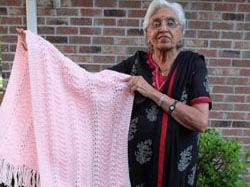
In 1999, Forum 35, a group whose mission is to improve Baton Rouge, initiated a campaign using the slogan, "We Are BR." I wanted to know who the "We" is, and more specifically, who are the tradition bearers, the individuals who carry on the city's traditions. Clearly, they had not been recognized, much less celebrated or promoted.
I concluded that Baton Rouge has low folk cultural esteem, in other words, both locals and non-residents do not hold the local folk traditions in high esteem. There is little awareness of the wealth of folklife the city offers. Such identity problems are common among capital cities and cities that benefited from the rise of suburbia2 (Daum and Mauch 2005). Baton Rouge is both. Being sandwiched between New Orleans and Lafayette, cities with strong folk cultural identities, doesn't help the situation. Many cultural groups in Baton Rouge have annual sacred or secular events, such as the St. Patrick's Day parade, Festival Latino, a Hindu mela, and St. Joseph altars, but they may have little other presence through the year. The newspapers and magazines do a good job of covering cultural events and feature stories on traditions maintained by groups or families. Yet Baton Rouge, unlike New Orleans and Lafayette, doesn't have organizations that regularly present folk traditions to the public and contemporary artists generally do not draw upon the city's folk traditions for inspiration like those of New Orleans and Lafayette. The tradition bearers are here; they are just harder to find because many are hidden in private or sacred spaces or practiced by families, clubs, or other groups not intended for the general public. Also, they are not regularly celebrated as a community.
I have known or known of many Baton Rouge tradition bearers and cultural groups. I have seen hidden in suburban homes and inner-city residences quilts, crocheted bedspreads, and home altars. One woodcarver had carved saints and mounted them on his kitchen cabinets. Bedrooms have been turned into Buddhist holy rooms or craft rooms where cloth dolls are created. Some residents (who otherwise don't have vegetable gardens) have small patches of green onions and parsley in a flower bed, evoking memories of the kitchen herb gardens of the past. Front yards display statues of the Virgin Mary. Living rooms host jam sessions for bluegrass, blues, Cajun, zydeco, and, for a while after Hurricane Katrina, Mardi Gras Indian practice. Offices have holiday parties and display elaborate decorations. Memorials to lost loved ones may be found on roadsides or appear on t-shirts. In workshops, duck decoys are carved and mandolins made. Baton Rouge has a wealth of traditions and traditional artists—some public and some private, some unique to the city and some not—that make it the community it is today.
I have known families who grow far more vegetables, especially tomatoes, figs, and satsumas, than they can consume in order to give some away in an informal economy of exchange. And immigrants maintain gardens in order to have vegetables not readily available here. I have seen groups gather for barbeques, crawfish boils, and fish fries at home, parks, or at tailgate parties. Hunters and fishermen arrive home with the state's bounty and then process it in extensive outdoor kitchens and offer feasts for family and friends.
Nonetheless, Baton Rouge is not recognized for having a folk culture. I decided to apply my expertise to the situation and look at Baton Rouge through my folklorist lens and begin documenting traditions in the city. Thus the Baton Rouge Folklife Survey was born.
A folklife survey was not a new strategy for the Folklife Program. Since its inception in 1979, the program has initiated projects on regions or topics neglected by other researchers. The first major survey was the Florida Parishes project in the 1980s, which produced the book Folklife in the Florida Parishes, now online. The next regional project was northeast Louisiana, a 20-year project culminating in 2013 with the online book, Delta Pieces: Northeast Louisiana Folklife. The New Populations Project documented immigrants throughout the state. The program has also focused on the Neutral Strip—or "No Man's Land" as western Louisiana is known—although more work is needed.
Folklife, Communities, and Sense of Place

Baton Rougeans, like people anywhere, create community through groups. Whether based on cultural heritage or ethnicity, religion, work, neighborhoods, or affinities (such as gardening or sports), these groups create traditions that are passed down informally over time and space; this is the definition of folklife—traditions that are shared by a group and passed down. Everyone and every group has folklife. And everyone belongs to several folk groups. Taken together, folklife, in turn, reflects a community's sense of place, the community's identity, and distinctive characteristics.
Folklorists use the term "tradition bearer" to describe an individual who maintains a tradition even if, in some way, they are influenced by mass media or formal training. So, when a conservatory trained vocalist sings traditional hymns in the hospital for a fellow congregation member or a contemporary fiber artist crochets prayer shawls for relatives coping with cancer, they are bearers of traditions.
Baton Rouge and Its Folk Groups
Baton Rouge has many groups based on traditional cultures or folk practices. Many are active and connected but only seen by the public at special events. The region does not have non-profit organizations that regularly present the traditions of either one cultural group or many, making these cultural groups less visible. This is exacerbated by Baton Rouge's economically stratified—rather than culturally or ethnically—suburbs. The exceptions are African American neighborhoods in north and south Baton Rouge and the Vietnamese community along Florida Boulevard in the eastern reaches of East Baton Rouge Parish. More recently, some Latino enclaves are developing, such as one near Red Oaks Subdivision along Florida Boulevard.
The largest cultural groups in the greater Baton Rouge area are those descended from European Americans and African Americans,3 with some closely identifying with specific ethnicities such as Italian and Irish. In spite of its French name, Baton Rouge is not a French town; nonetheless, many Cajuns and Creoles live here. The immigrant experience in Louisiana is largely an urban one with Baton Rouge having the second largest concentration of most immigrant groups in the state.4 The largest foreign-born groups hail from Vietnam, India, and China, but significant numbers also come from Mexico, Cuba, Germany, the United Kingdom, Palestine, and Nigeria.5
Louisiana has historically had the largest native-born population in the country with 78.8% of its residents born in the state (Skelley 2013). Baton Rouge is perceived as having more transplants, but the native-born rate of its residents is actually 76.9% (Governing 2016). Clearly, Baton Rouge folklife has deeper roots than is generally acknowledged. No doubt this rate would have been less during the 1970s during the expansion of the petro-chemical industry which attracted so many new workers from across the country. Their children and grandchildren are now counted among the native born.
The East Baton Rouge Parish population has grown significantly since World War II. In 1940, the parish population was 88,415 and by 1980 it was 366,191, with the most dramatic growth occurring during the 1970s. In 2015, the population was 446,753 (US Census 2015). Two of the surrounding eight parishes experienced similar growth. In 1960, Ascension and Livingston Parish both had populations of around 37,000. By 2014, these areas had grown to 117,029 and 136,751 respectively. The populations of other adjacent parishes have not experienced such growth; West Baton Rouge, West Feliciana, East Feliciana, Pointe Coupee, Iberville, and St Helena have maintained populations of 10,000 to 30,000 (Louisiana State Census Data Center 2016). Together, these nine parishes create the Baton Rouge Metropolitan Statistical Area with approximately 825,499 people in 2014.6
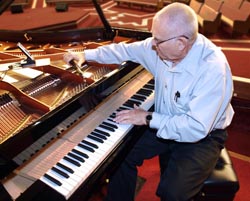
This rapid increase in population coincides with the growth of suburbia, which has affected the area's cultural dynamics. East Baton Rouge Parish includes urban, suburban, and rural areas in addition to three small towns: Baker Central, and Zachary. The eight adjacent rural/suburban parishes are closely connected to the city creating a web of relationships and networks throughout the region. Baton Rouge serves as an economic hub for the region, and its population density allows often specialized businesses to exist that would otherwise be difficult to sustain.
The Baton Rouge Folklife Survey
The first step in starting a folklife survey is to inventory traditions and gather existing research. Using an informal process, I asked people—both residents and non-residents—what Baton Rouge is known for. Most mentioned tailgating and football and stopped there. Others went on to say that family and church are important. When asked what traditions are noteworthy, some said Spanish Town Mardi Gras and blues music. Some even said that Baton Rouge didn't have any traditions.
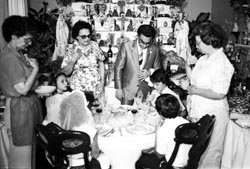
While scholars around the world research Louisiana's folk cultures, especially those of south Louisiana, Baton Rouge has, prior to this project, received relatively little attention. Baton Rouge was included in the Louisiana Folklife Program's Florida Parishes Folklife Survey, the first regional survey done in the early 1980s. LSU folklorist Joyce Jackson—who had worked with several African American churches in north Baton Rouge—and I provided fieldwork for the chapter on Baton Rouge and Livingston Parish, which provides an introduction to the successive waves of the area's cultural groups. Nicholas Spitzer documented Baton Rouge bluesmen while serving as the state folklorist and contributed his findings to the 1985 Louisiana Public Broadcasting documentary, Rainin' in My Heart. Nearly twenty years later, Jocelyn Donlon wrote about the Spanish Town Mardi Gras parade for the Louisiana Voices Folklife in Education Project, and two essays were first published in the Louisiana Folklore Miscellany. Nonetheless, the area was relatively ignored until 2005 when the New Populations Project began documenting the traditions of several Baton Rouge immigrant communities: Chinese, Indian, Latinos, Muslim, and Vietnamese.
Scholars often focus on what is unique to an area, but with the Baton Rouge Folklife Survey, we cast a broader net and with that approach we found plenty. So, instead of "Baton Rouge Folklife," it is "Folklife in Baton Rouge." The results are presented in the online book, Baton Rouge Traditions.
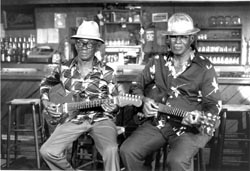
From 2013 until 2017, twelve researchers documented tradition bearers and wrote twenty-one essays based on their fieldwork. Some researchers did more than one project or wrote multiple essays. The fieldworkers brought varying perspectives. Some came from other states and had not previously worked in the South. Others were from Louisiana, and a few hailed from Baton Rouge. Some folklorists were senior fieldworkers with years of experience, while others were recent college graduates.
Most of the folklorists documented traditional artists with recorded interviews, but a few drew upon prior research and provided essays. At times, I augmented their work by photographing events that the contracted folklorists could not attend, and I assisted in developing contacts. As with all Louisiana Folklife Program projects, new contacts are added to the program database and, if individuals have given permission, their contact information is made available to festival organizers, filmmakers, tourism officials, museum staff, and others.
In addition to documenting relevant traditions reflective of Baton Rouge's character, each project was, in part, based on the strengths and interests of each researcher. I was successful in getting some things documented on my wish list, but not others. The fieldworkers contributed ideas, too. For example, the fieldworkers not from Louisiana noted the multitude of churches, barbershops, beauty salons, and nail salons. All of these comments helped to inform the fieldwork topics. I worked with the fieldworkers to document traditions that reflect these, but was also open to the serendipity of fieldwork, for example, some fieldworkers identified traditions that I had not considered.
The project also sought to include an array of cultural groups and represent diverse folklife genres: crafts, customs, dance, folk theater/street performance, foodways, music, oral traditions, occupational traditions, recreational traditions, ritual traditions, and traditional landscapes. The documented individuals reflect the myriad groups that make up Baton Rouge—from those who have been here for generations to the most recent of transplants due to Hurricane Katrina and immigration. Most of the major ethnic groups are represented. Traditions based at Louisiana State University and Southern University are also included. While most tradition bearers are located in East Baton Rouge Parish, some are in the surrounding towns of Denham Springs, Gonzales, and Port Allen.
Baton Rouge Traditions: An Online Book
Baton Rouge Traditions is a compilation of essays—those produced from the Baton Rouge Folklife Survey as well as others from the New Populations Project, the Louisiana Folklore Miscellany, and earlier projects. Following this introduction, the essays are organized into six chapters: Baton Rouge Gives, Baton Rouge Makes, Baton Rouge Plays, Baton Rouge Worships, Baton Rouge Works, and Baton Rouge Diversifies.
Each essay features photographs that can be enlarged and viewed as a slide show. Most essays also have audio clips from the recorded interviews. Essays marked with an asterisk (*) in the table of contents have corresponding field reports, available upon request, that offer more details.
Subsequent to this essay, the introduction includes Traditions of Baton Rouge, a photographic essay organized around folklife genres. It features images of each person and tradition documented in the survey in addition to traditions not documented by interviews, such as other craftspeople and musicians, but also traditions such as office customs, memorials, parades and marching groups, and landscapes.
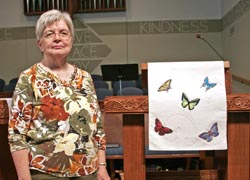
Baton Rouge Gives focuses on three noteworthy philanthropic efforts in Baton Rouge: groups engaged in animal rescue and individuals who make and donate traditional fiber arts. Folklorist Carolyn Ware looked at the former, specifically groups seeking "forever homes," as well as their special events, customs, and volunteers' personal narratives. Documenting the latter, Laura Marcus Green studied fiber artists who make quilts, prayer shawls, caps, and other handwork for policemen to give to at-need children, and for handwork guilds and craft groups to donate to premature babies, cancer patients, and veterans. Two such efforts started in Baton Rouge have become regional and national projects: Threads of Love and The Giving Quilt. Laura Marcus Green and I also documented St Joseph altars, which are gifts to the community, with a special focus on the specialty cakes.
Baton Rouge Makes includes individuals who draw upon their diverse heritages to create an array of traditional crafts. Folklorist Douglas Manger documented cowboy saddles and whips, metal fabricating barbeque pits, fly tying, horseshoeing, leatherwork, and airbrushing in addition to wooden boats, christening gowns, and chainsaw sculpting. Folklorist Jocelyn Donlon and leisure studies researcher and photographer Jon Donlon documented fabricators of Mardi Gras ball gowns and parade costumes. Folklorist Laura Marcus Green documented quilter Judith Braggs and the ways in which her quilts reflect her heritage. Photojournalist James Terry and I documented African American tradition bearers who tailgate, do handwork, make cloth dolls, and celebrate Juneteenth. Folklorist Daniel Atkinson focused on the power of narrative for tradition bearers when talking about their traditions and documented the founder of an African American museum and a quilter who made teaching aids for the museum in addition to carvers, painters, a filé maker, and a split oak basket maker. Barbara Franklin wrote her memories of making dolls and supporting her family for the Louisiana Folklore Miscellany and it is included here. Some tradition bearers have participated in public programs or even received grants, like boatbuilder Keith Felder and whipmaker Billy Anderson. Others had not previously participated in public programming, such as christening gown seamstress Lorraine Bergeron and saddle maker Ken Raye.
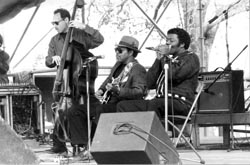
Baton Rouge Plays includes essays on recreational traditions. Douglas Manger profiled sac-a-lait fisherman Glenn Davis, and Jocelyn Donlon documented the Spanish Town Mardi Gras celebration. Essays about secular music and dance traditions include Dominic Bordelon's 2009 essay on Latino music and dance and Guiyan Wang's 2009 examination of the importance of dance in the Chinese community. Ethnomusicologist and folklorist Joyce Jackson updated documentation on Baton Rouge blues music, with a particular focus on bluesman Larry Garner, who maintains the most traditional repertoire among his local peers. Music writer Ben Sandmel looked at other secular music traditions including Cajun fiddle, zydeco, country music, and jazz.
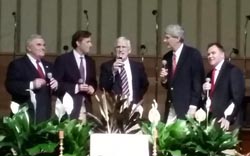
Baton Rouge Worships looks at sacred music and ritual traditions in local churches, synagogues, mosques, and temples. Joyce Jackson explored preaching styles of four African American ministers and, in 1996, she wrote about gospel quartet The Zion Travelers for a recording project. Anthropologist Liz Williams documented choirs, chanters, cantors, and song leaders in diverse Christian churches. Ethnomusicologist Maureen Loughran documented other sacred sounds from Greek Orthodox and Vietnamese Buddhist chants and Muslim recitation and instrumental music to Jewish and Christian songleaders and group singing. From the New Populations project, Daria Woodside documented the Hindu festival of Navaratri in 2007 and a puja or Hindu prayer service in 2006. In 2009, Emma Tomingas-Hatch documented Vietnamese altar traditions in Baton Rouge and Lafayette. In the 2017 Louisiana Folklore Miscellany, Von de Leigh Hatcher wrote about her family tradition in the Pentecostal church and the importance of hair for women and it is included here.

Baton Rouge Works includes essays on occupational folklore. This section is particularly strong with a special focus on people employed in small businesses who have specialized skills, such as musical instrument repair, auto airbrushing, bakers, and specialty dress shop owners. Jon and Jocelyn Donlon focused on repair services—shoes, furniture, rod and reels, instruments, and jewelry in addition to a locksmith and clothier. Douglas Manger documented a taxidermist, barber, funeral home, custom sign maker, piano tuner and a clothier. He also looked at restaurateur Wirt Bellue and how he used his welding skills to creatively solve problems for his restaurant and food processing business. Laura Marcus Green looked at bakeries and specialty cakes including grooms cakes and the emerging tradition of cakes that announce a baby's gender. She also documented shop owners who specialize in hats and dresses for African Americans to wear to church. Maria Zeringue documented food business including ethnic grocerys, boudin makers, and tea cake makers. David Kunian documented long-time state capitol workers and legends about the building.
Folklorist Carolyn Ware drew upon her work with the Louisiana State University School of Veterinary Medicine and wrote about veterinarian customs and rituals, including office traditions. Folklorist Maria Zeringue documented tea cake makers, boudin makers, and specialty grocers. David Kunian captured legends of the State Capitol by interviewing long-time capitol workers. Laura Marcus Green documented the African American tradition of wearing hats to church and for other special occasions with a focus on retailers who sell them.11
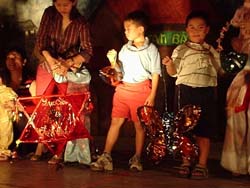
Baton Rouge Diversifies includes essays from the New Populations project that focus on immigrant communities in addition to an article from the Louisiana Folklore Miscellany. In 2007, Jun Zou looked at the Baton Rouge Chinese community, including its traditions of paper folding, feng shui, festivals, and foods. In 2007, Jocelyn Donlon documented the traditions of various Muslim communities including Bosnian pita bread making, henna, Palestinians cross stitch, and calligraphy. Two of these essays were first published in the Louisiana Folklore Miscellany. In 2010 Dominic Bordelon examined Latino experiences in the city, in 2012 Cecelia Vo documented her family traditions surrounding the Vietnamese Moon Festival, and in 2017 Sylviane Greensword looked at African immigrants who have hair braiding salons in Baton Rouge.
Undocumented Traditions
Despite such extensive efforts, there were many people and traditions that, although identified, did not get included. Some local welders, for example, create belt buckles made from industrial scrap metal in addition to fabricating custom outdoor cooking equipment used for crawfish boils. Other traditions that remain undocumented are the parade dance troupes including the Italian Marchers, Baby Cakes, and the Dancing Girls. Several neighborhoods host children's parades that coincide with Christmas, St. Patrick's Day, Mardi Gras, and Easter. Three bagpipe groups are in Baton Rouge along with a Scotish ballad singer, old time country fiddlers, a Cajun family band, and a bluegrass band along with a Scottish ballad singer. Gardening is a local interest, especially of heirloom fruits and vegetables.
Baton Rouge is known for its diverse churches, and there is much to be done on sacred music as well as needlepoint kneelers, offertory bags, vestments, and other fiber arts in addition to guild traditions such as making communion bread in Orthodox churches. Secular music needs much more attention. Finally, the building arts should be documented: plastering, brick masonry, iron work, and cemetery restoration.
How the Documentation Will Be Used
All of the survey's documentation materials are to be archived in the Folklife Program's Special Collection at LSU's Hill Memorial Library. Field reports are public documents available upon request, especially to organizations wanting to use the research. The next step is to publically present the results. Organizations, especially those in the greater Baton Rouge area, are encouraged to make use of this research in a multitude of ways, such as in exhibits or at festivals.
Acknowledgments
The Louisiana Division of the Arts and the Office of Cultural Development have made the Baton Rouge Folklife Survey possible. It was supported by grants from the National Endowment for the Arts as was the New Populations Project. The reason that the occupational folklore section is so strong is due in part to an Archie Green Fellowship for occupational folklore research from the Library of Congress that was awarded to Maida Owens and the Louisiana Folklore Society. This documentation is also deposited in the Library of Congress.
I would like to thank all of the fieldworkers for providing their expertise to this project, but most of all I would like to thank the tradition bearers, for without them, Baton Rouge would not be the same. Regretfully, some passed away before they could be interviewed, and two passed away soon afterwards. And finally, I would like to thank folklorists Susan Roach, Carolyn Ware, and Teresa Parker Farris for assisting with this essay.
Notes
1. See the Baton Rouge history exhibit at the Old State Capitol for a good overview of the city's history. Also see the Urban Congress for a brief history of Black Baton Rouge.
2. Most of the research on identity and capital cities has focused on national capitals, such as Daum and Mauch's 2005 Berlin, Washington, 1800-2000: capital cities, cultural representations, and national identities. Urban planners propose that the research can apply to state capitals, too.
3. The 2000 US Census Ancestry Profile 1: First and Second Ancestries Reported states that 47,583 people in East Baton Rouge Parish reported a first ancestry of British, English, Irish, Scots Irish, or Scottish. 43,256 reported ancestries of Acadian/Cajun, French or French Canadian, and 26,628 reported general American ancestry. This report has limits as there was no category for African American.
4. Jefferson Parish has the largest number of foreign-born in Louisiana.
5. In 2000, the foreign-born were 3.76% of the total population of 412,852 in East Baton Rouge Parish. The 2000 Census is the last census to include the Ancestry Profile 3: Place of Birth for the Foreign-Born Population, which provides this level of detail.
6. The Baton Rouge Metropolitan Statistical Area consists of the parishes of Ascension, East Baton Rouge, East Feliciana, Iberville, Livingston, Pointe Coupee, St Helena, West Baton Rouge, and West Felciana. Towns surrounding Baton Rouge include Baker, Zachary, Denham Springs, Gonzales, Prairieville, Central City, Port Allen, Donaldsonville, Walker, Plaquemine, and St Gabriel.
Sources
Daum, Andreas W. 2005. Capitals in Modern History: Inventing Urban Spaces for the Nation. In Berlin, Washington, 1800-2000: capital cities, cultural representations, and national identities. Ed A. W. Daum and C. Mauch. Cambridge University Press. P. 3-30.
Homegrown, Native Population Totals for U.S. States, Cities. Governing.com. Accessed on May 5, 2016. http://www.governing.com/gov-data/census-migration-homegrown-populations-for-cities-states.html
Louisiana.gov. Population Estimates: Louisiana State Census Data Center. Accessed May 5, 2016. http://louisiana.gov/Explore/Estimates/
Skelley, Geoffrey. 2013. You're Not From Around Here, Are You: How migration does—or doesn't—change how a state votes. Sabato's Crystal Ball. University of Virginia Center for Politics. Accessed May 5, 2016, http://www.centerforpolitics.org/crystalball/articles/youre-not-from-around-here-are-you/
US Census. 2000. Ancestry Profile 1: First and Second Ancestries Reported
US Census. 2000. Ancestry Profile 3: Place of Birth for the Foreign-Born Population
US Census. 2015. Quick Facts: East Baton Rouge Parish. Accessed May 5, 2016. https://www.census.gov/quickfacts/table/PST045215/22033



